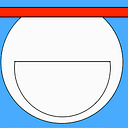So You Want to Use JavaScript in The Next Freelance Project —Object (Dictionary)

I still remember the days of debugging CORS problem when I put together some projects using JavaScript (& ajax), “a very particular programming language” in my first impression. Recently I got a great opportunity. The new role uses JS, the browser-side script that is now winning in all sides, as the major language. So I took it as a good chance to learn JS more systematically, and this series will be part of the outcome of my study. As the name implies, I will not cover primary level such as “if, else” (condition), “for” (or any kinds of loops), or basic OOP concepts. Instead, I will focus only on differences so you can learn this versatile language like reviewing a pull request, and use it the next day in your next awesome project.
— Some Basics
— String and Array
— This
— Object (Dictionary)
— Prototype (1)
— Prototype (2)
—Async
In JavaScript, it is hard to differentiate an object and a dictionary (a.k.a., map in some other languages):
var hero = {
name: 'iron man',
birth: 1971,
};alert(hero["name"]);// use map key to fetch property
alert(hero.name);var herodict = {
"name": 'iron man',
"birth": 1971,
};alert(herodict["name"]);
alert(herodict.name);// use property name to fetch a value
Result:
iron man
iron man
iron man
iron manAccording to the result, the behavior of objects (those with properties) and dictionaries (those with string as keys) are the same. I will use . when referring to properties in the rest of text, since object is the official name.
In the above example, the class of an object is defined in a one-off manner. To declare a types (a.k.a., class) that can be reusable, we use constructor or class (es6).
Constructor
A constructor is a special usage of function, for 1) define a type; and 2)creating an object:
Example:
function StarkIndustries(name, birth) {
this.name = name;
this.birth = birth;
}var iron1 = new StarkIndustries('iron01', 2017);
var iron2 = new StarkIndustries('iron02', 2017);alert(iron1.name);
alert(iron2.name);
Result:
iron01
iron02As per the code, this special usage is activated by adding new before an ordinary method. So we can use the method as a constructor that constructs and initialize an object.
Revisit this issue
Missing new falls into the this pitfall, when using a method that is designed as a constructor
var name = "stark";
var birth = 1971;function StarkIndustries(name, birth) {
this.name = name;
this.birth = birth;
}var iron1 = StarkIndustries('iron01', 2017);alert(iron1);
alert(name);
alert(birth);
Result:
undefined
iron01
2017From the experiment above, we can observe that without new:
thisinsideStarkIndustries()points towindow, thus, the outside global variables(name,birth) have been tampered within the misused constructor;- the misused
StarkIndustries()returns aundefine.
So it is a dangerous operation.
solution 1
A common practice is doing sanity check inside the constructor:
if (!(this instanceof StarkIndustries)) {
warn("StarkIndustries is a constructor and should be called with `new`");
}solution 2
or use strict mode in which this is set to undefined in the above case:
"use strict";And it is fine if you want to do both. Or, you can use real constructor inside a real class.
Class
Example:
class Hero {
constructor(name, birth) {
this.name = name;
this.birth = birth;
}
}var iron1 = new Hero('iron01', 2017);
var iron2 = new Hero('iron02', 2017);alert(iron1.name);
alert(iron2.name);
Result:
iron01
iron02What if new is missed here:
class Hero {
constructor(name, birth) {
this.name = name;// note, here we can still declare properties within constructor
this.birth = birth;
}
}var iron1 = Hero('iron01', 2017);// error: Uncaught TypeError: Class constructor Hero cannot be invoked without 'new'var iron2 = Hero('iron02', 2017);alert(iron1.name);
alert(iron2.name);
The code triggers an error when we are about to create iron1. So class is generally safer than the method constructor.
Dictionary
At last, we examine more dictionary facets of an object. In particular, I will show two more operations, add and removal, that can be applied on an object’s properties just like on key-value entries.
function StarkIndustries(name, birth) {
this.name = name;
this.birth = birth;
}var iron1 = new StarkIndustries('iron01', 2017);alert(iron1);
alert(iron1.name);
alert(iron1.birth);iron1.age = 0;alert(iron1.age);delete iron1.age;
alert(iron1.age);
Result:
iron01
2017
0
undefinedBesides the techniques described above, JavaScript provides prototype as a more flexible way to modify class definitions. I will start discussing prototype in the next post.
Thanks for the reading and I’ll see you next time.

